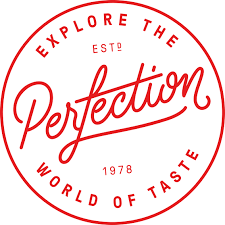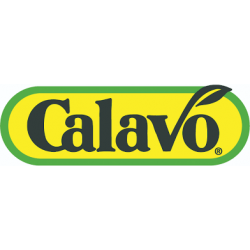As the impact of tariffs hits grocery shelves, retailers and their customers are bracing for higher prices, supply chain disruptions and potentially less variety.
Amanda Oren, vice president of industry strategy for grocery North America at Relex Solutions, a native artificial intelligence (AI) platform that helps retailers and manufacturers improve forecast accuracy, optimize operations and increase efficiency and sales, says more disruption is coming.
“There are a number of overall factors we're seeing and specifically, the impact of tariffs. We're definitely seeing impacts to the overall supply chain. We're seeing higher transportation costs and some trade disruption,” she says.
Oren, whose background includes executive roles at Good Food Holdings, Grocery Outlet and Foodland, says the volatility around tariffs has been particularly challenging for grocers.
“There's been tariffs announced and then pulled back, and then certain things have gone into effect, and then they've been pulled back,” she says. “What we've seen so far is that grocers, in particular, are hesitant to make long-term investments in changes related to tariffs, because there's so much evolving change going on right now.”

The Produce Department
When it comes to which fresh produce commodities will be hit hardest by tariffs, Oren points to bananas and mangoes, which are not mass produced in the U.S.
“Then we have a second bucket of products that can be mass produced in the United States, but not year-round, and there is demand for these items year-round,” she says.
Avocados, blueberries, broccoli, cucumbers, strawberries and peaches, which are produced in the U.S. but not year-round, will be impacted most by tariffs, says Oren, adding that lower-volume items will also be more impacted by tariffs than higher-volume items.
In terms of which countries and their exports to the U.S. will be most impacted by tariffs, Oren is looking south.
“As most agricultural products from Mexico are currently exempt from tariffs, it's basically Central and South America — which is where much of the rest of our produce is being imported from — where the price hikes are having the biggest impact,” she says. Oren adds that higher-end ethnic products imported from Asia are also going to see a pretty significant price increase.
Ultimately, says Oren, analysts expect tariffs to lead to higher prices and a decrease in the overall variety in the produce department.
“The majority of these price increases are going to get passed on to the consumer, whether or not it's being transparently communicated, but it's going to happen because margins are very tight for grocers, and there's not a ton of wiggle room to absorb cost increases without passing them on,” Oren says. “That said, grocers are trying to mitigate those specific scenarios through a number of strategies. They're trying to lean more heavily on private label and on places where they have more control over the overall supply chain.”
Oren says retailers are also trying to decrease the impact of tariffs by leaning into certain commodities that can be produced domestically or shifting or expanding their supplier base to countries with lower or no tariffs.
Retail Solutions, Pricing
Oren sees price-sensitive consumers stockpiling imported center store items like coffee and olive oil, and while that's not possible with highly perishable fresh produce, Relex Solutions offers tools to help retailers navigate the turbulence caused by tariffs.
“There are two key areas where we play an active role,” she says. “The first one is helping grocers figure out the optimal quantities they should be purchasing based on price hikes that are coming down the way, and that has a lot to do with the shelf life of the product, obviously. So, for produce there's less stockpiling than there would be for center store products.
“The other place we play an active role is we have a price optimization tool that [determines] the optimal price based on what the competition is doing, increased costs, etc., to meet your company's goals, whether that is optimizing margin dollars, optimizing traffic into your stores or creating a certain price perception,” Oren continues. “Retailers need an overall pricing strategy, but then our tool helps execute on that strategy. Especially because of tariffs, companies really need an AI native machine learning tool to help them figure out what that price should be for each item.”
Relex uses a retailer's pricing history to understand how price elastic each item is.
“As an example, if your recipe is calling for paprika, there really isn't a substitute item, right? And so that's an item where, No. 1, people don't know exactly how much it costs. No. 2, there isn't a good substitute. So, that's an item where the data would show you can take a price increase and not have it impact your overall unit sales,” she explains.
But in produce categories like cucumbers, where a shopper might have multiple options from which to choose — organic, mini, English or Persian — a significant price hike would likely result in the consumer choosing a less expensive option.
“There is an assumption that there will be some trading down for sure,” Oren says. There's also a question around some of the commodities that are lower volume. Are people going to just stop purchasing that rare type of mushroom, for example, if it goes to a price where they don't feel comfortable?
“There's also the idea that organic produce might become particularly vulnerable to demand shifts if the price premium starts to get bigger over conventional items,” she adds.
Oren also sees some consumers turning to private label for savings or shifting their produce purchase to frozen and canned fruits and vegetables.
Looking Ahead
What might this tariff volatility spell for the fresh produce industry in the year ahead?
“I think there will be a decrease in variety, and I think there will be price increases, but overall, my gut tells me that the government is very reactive right now and is seeing what's going on and the volatility in the market and pulling back as needed, and being very strategic on where to pull back and how to pull back, so that the impact isn't so significant to the overall economy.”
Oren is also hopeful that Make America Healthy Again (MAHA) may also help with fresh produce pricing.
“There's a feeling that the MAHA movement within the government is going to start having a bigger voice if produce tariffs are too high and pricing is impacted … and that they'll pull back [on tariffs] as needed strategically,” she says.


.png)















